Writing Teaching Resources
Teaching writing strategies and the writing process this school year? Explore a comprehensive collection of teacher resources for elementary and middle school ELA teachers — all created by teachers!
Stocked with graphic organizers, writing prompts, templates, worksheets and so much more, this collection of printable and digital activities is designed to help you as you help your students become more effective communicators and unleash their creativity and imagination.
Save time on lesson planning with resources that have been through a careful review process by an expert member of our teacher team to ensure they're ready for your classroom and your students!
Are you looking for tips and tricks to add to your teacher toolkit this school year? Read on for a primer from our teacher team, including engaging activities for teaching writing in elementary and middle school and a look at some of the different writing strategies your students will need to learn.
11 Writing Strategies Kids Should Know by the End of Middle School
We can't talk about teaching kids to write without talking about the different writing strategies that can help them do just that!
When it comes to teaching our students to become confident writers who articulate their ideas effectively, here are some of the strategies our teacher team prioritizes:
1. Brainstorming
Brainstorming is something we often do in the classroom, and it's a crucial part of learning to generate the ideas that will drive students' writing as they progress through their educational journey. Kids should know how to create a list of potential topics or points related to a particular writing assignment.
With younger students, this is often done as a whole group by writing ideas and points on chart paper. In upper grades, students transition over to using text-based materials to generate ideas and talking points.
2. Outlining
Before diving directly into any assignment, our students should be able to create a structured framework or outline. Teaching students how to create this outline will help them organize their thoughts and arguments for penning their essays, reports and research papers.

3. Using Graphic Organizers
Technically graphic organizers are classroom tools, so you may not think of their use as a writing strategy per se. However, learning to use these tools is another means of providing kids with the tools they need to organize their ideas and information before they sit down to write.
These organizers are particularly useful for expository writing — students can use them to outline main ideas, supporting details, and transitions.
Students can also take advantage of story maps when they are working on narrative writing to plot the key elements of a story, such as characters, setting, conflict, rising action, climax and resolution.
Graphic organizers such as the OREO strategy and hamburger paragraph are also great tools for students to use when working with opinion and persuasive texts.
4. Freewriting
Writer's block is the enemy of creativity, and it can easily frustrate young students who don't know where to begin.
When students freewrite, they write continuously without worrying about grammar or punctuation. This writing strategy can be extremely freeing — hence the name! — and helps frustrated writers move past that writer's block, generating fresh ideas.

5. Peer Editing
Learning to review and provide constructive feedback on each other's work is a great writing strategy to employ in your classroom to help students improve their writing quality and enhance their editing skills.
The strategy allows your students to learn from one another, and it arms them with an important tool they can use well into the future — calling on peers to provide a critical eye to a piece of writing.
6. Using Sensory Language
Working on descriptive writing? With this writing strategy, students engage the reader's senses through vivid and sensory language to create a more immersive experience.
7. Including Transitions and Connectives
As students become more proficient in the writing process, learning to use transitional words and phrases allows them to create smooth transitions between sentences and paragraphs. This strategy makes their writing more coherent and polished.
8. Incorporating Evidence
In persuasive, opinion, and expository writing, students are taught to support their claims with evidence and examples to strengthen their arguments.
It takes some practice to train your students to use evidence in their writing, so it's often a good idea to start with something simple, like the R.A.C.E.S. strategy.
9. Crafting a Thesis Statement
In expository, opinion, and persuasive writing, crafting clear and concise thesis statements that summarize the main point or argument of their essay helps students be more focused and organized in their writing. This strategy can also have the effect of empowering students to express their ideas confidently and persuasively.
10. Incorporating Introductions and Conclusions
With this strategy, students practice crafting effective introductions and conclusions that grab the reader's attention and leave a lasting impression.
11. Following a Revision Checklist
Teaching your students to use a revision checklist is a strategy that will help them be more self-reflective, evaluating their own writing against the checklist criteria and becoming more aware of their strengths and weaknesses.

- Plus Plan
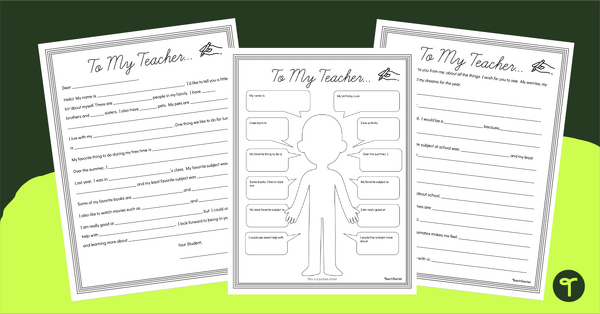
A Letter to My Teacher Activity Sheets
Get to know your students a bit better using a ‘Letter to Teacher’ template.
- Plus Plan
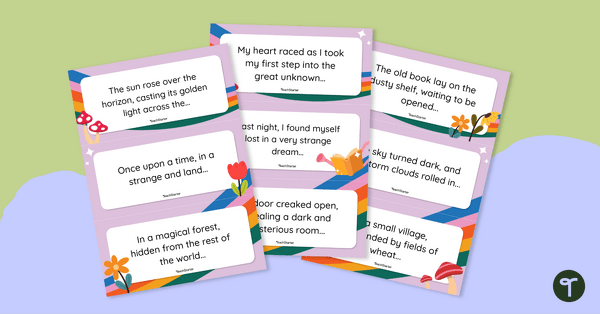
Inspiring Story Starters - Task Cards
Get your students writing during Read Across America week with this set of inspirational narrative story starter task cards.
- Plus Plan
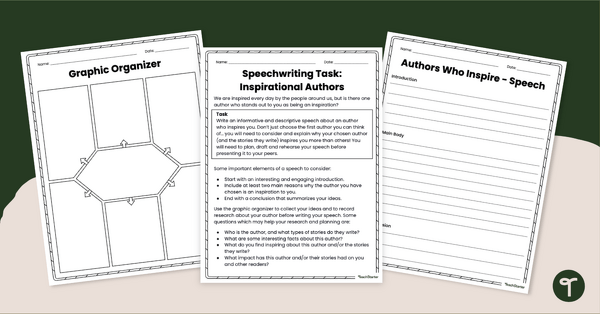
Authors Who Inspire - Speechwriting Task
Research and celebrate an inspiring author during Read Across America Week with this speech-writing task.
- Plus Plan
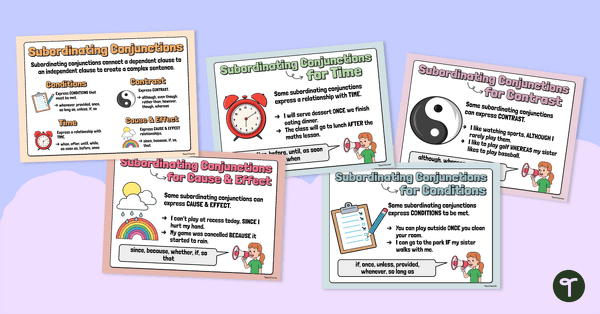
Subordinating Conjunctions Posters
Display this colorful and informative subordinating conjunctions poster set to remind your students of the functions and types of subordinating conjunctions!
- Plus Plan

Subordinating Conjunctions Game Show Interactive Activity
Use this interactive digital activity to assist your students in practicing identifying and constructing sentences using subordinating conjunctions in a fun way!
- Plus Plan
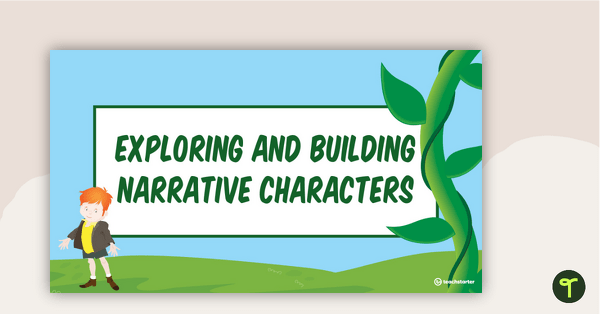
Exploring and Building Narrative Characters PowerPoint
A 14 slide editable PowerPoint template to use when teaching younger students about how to build a character for a narrative text.
- Plus Plan
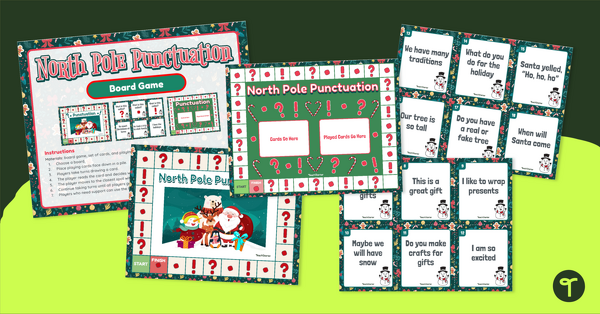
Christmas Board Game - 1st Grade Punctuation
Engage students by having them play a Christmas board game, refining their abilities to use correct punctuation at the end of sentences.
- Plus Plan
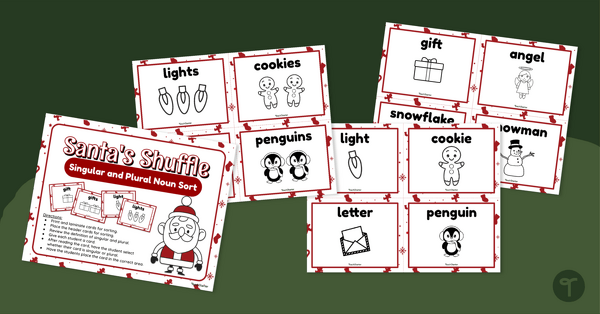
Singular or Plural? Christmas Noun Sort
Help your students determine if words are singular or plural with a fun Christmas-themed noun sorting center.
- Plus Plan
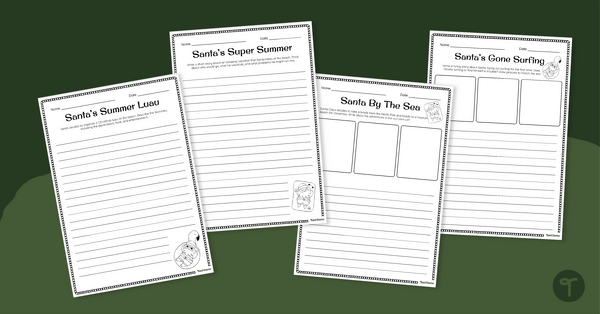
Summer Santa on Vacation - Christmas Writing Prompts
Inspire hilarious Christmas narratives with a printable set of Santa on Vacation writing prompt worksheets.
- Plus Plan
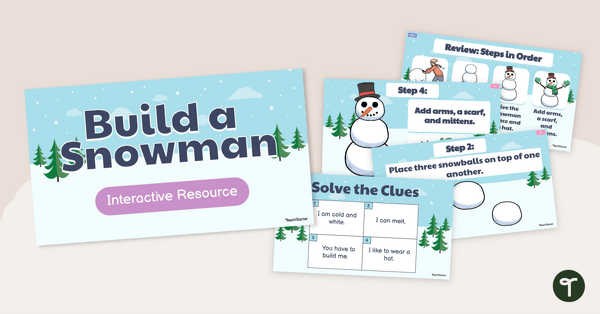
Interactive Build A Snowman Sequencing Activity
Practice sequencing and writing procedural texts with an interactive How to Build a Snowman game.
- Plus Plan

Conjunctions Spinners (Coordinating Conjunctions, Subordinating Conjunctions, Correlative Conjunctions)
Bring some fun to your grammar lessons with these colorful conjunctions spinners! Students spin to reveal a conjunction to use in their writing or oral language.
- Plus Plan
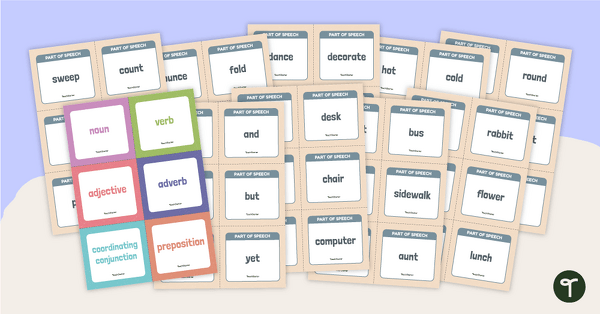
Parts of Speech Word Cards Sorting Activity
Engage your students with this parts of speech group activity where they sort 112 word cards into categories (nouns, verbs, adjectives, adverbs, coordinating conjunctions or prepositions).
- Plus Plan
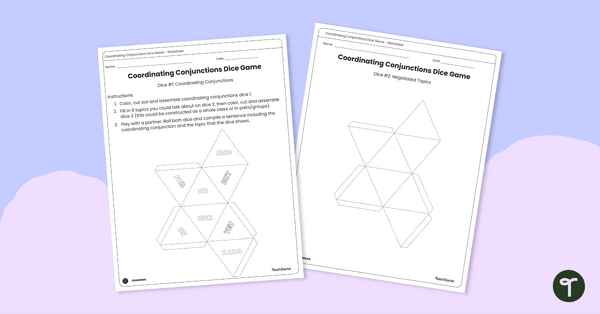
Coordinating Conjunctions Dice Game
Use this hands on activity for students to create two 8 sided-dice and write compound sentences using coordinating conjunctions.
- Plus Plan
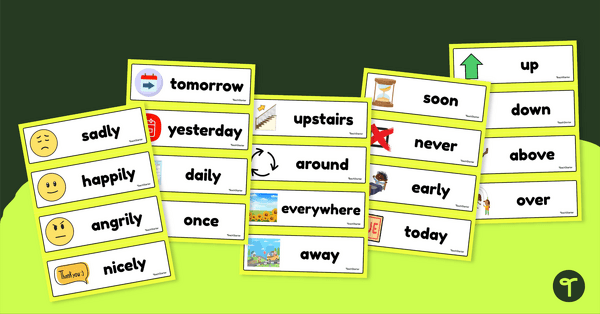
Adverb Vocabulary Cards
Display this word wall featuring a list of adverbs in your classroom to encourage your students to explore and use adverbs in their writing!
- Plus Plan
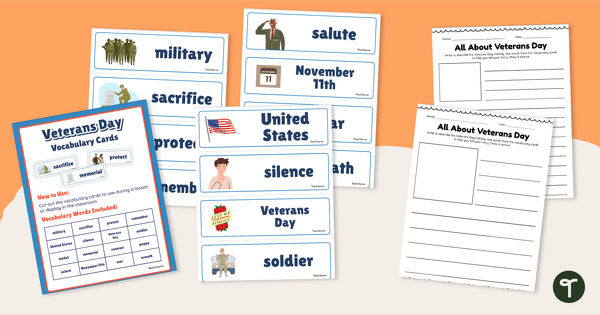
Veterans Day Vocabulary Cards and Writing Center
Help your kindergartners and first graders understand the meaning of Veterans Day with a Veterans Day Write the Room display.
- Plus Plan
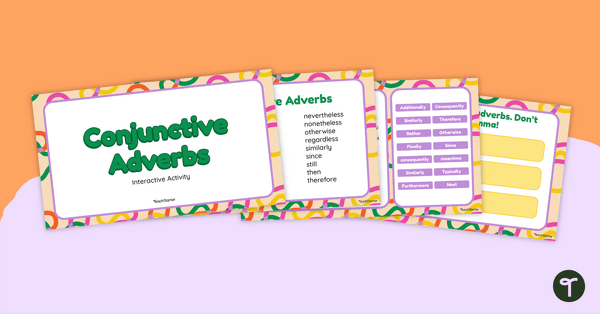
Conjunctive Adverb Interactive Activity
Use this engaging interactive activity in your classroom to teach students what conjunctive adverbs are and how to use them in their writing.
- Plus Plan
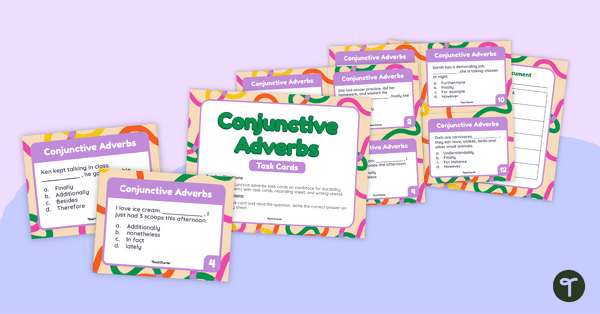
Conjunctive Adverbs Task Cards
Assess your students’ understanding of conjunctive adverbs with these fun adverbs task cards!
- Plus Plan
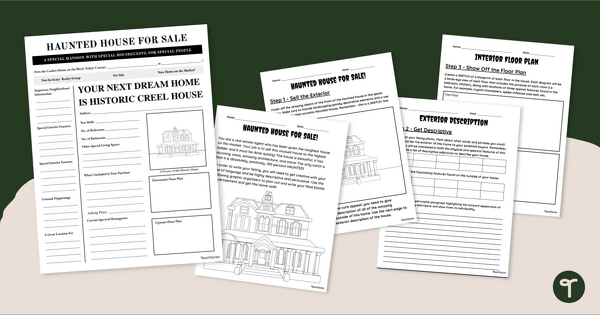
Haunted House for Sale - Creative Writing for 5th Grade
Use persuasive language and description writing to sell a haunted house with this exciting Halloween Haunted House Project!
- Plus Plan
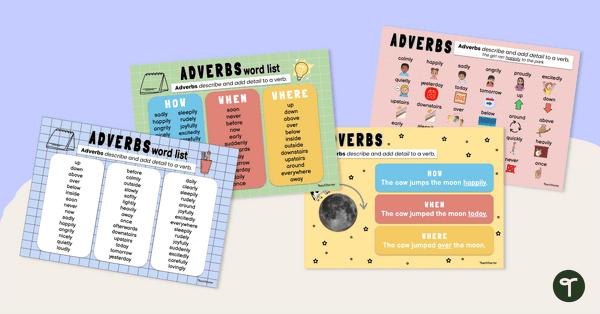
Adverb List Posters
Display this poster set (including a list of adverbs) in your classroom to encourage your students to explore and use adverbs in their writing!
- Plus Plan
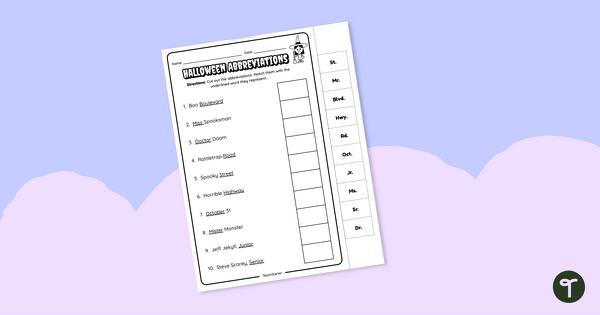
Halloween Abbreviations Worksheet
Practice identifying the correct abbreviations for commonly used words with a printable Halloween-themed abbreviations worksheet.
- Plus Plan
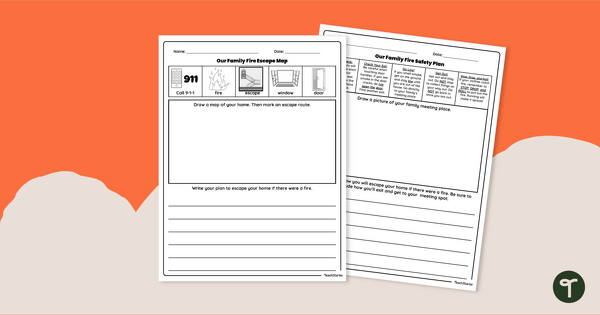
My Family Fire Escape Planning Worksheet
Plan ahead and encourage families to develop a fire escape plan with a pair of printable fire escape planning worksheets.
- Plus Plan
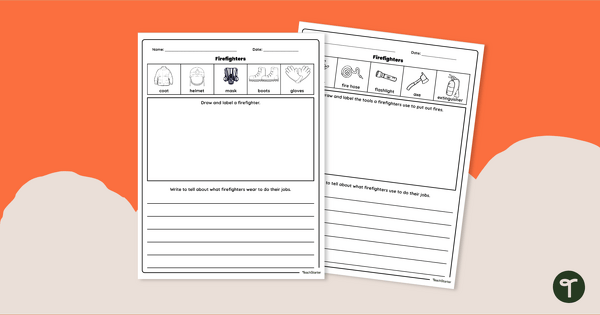
Firefighters Writing Worksheets for 1st Grade
Draw and write about what firefighters wear and what they use to do their jobs with a pair of printable firefighter writing worksheets for 1st grade.
- Plus Plan
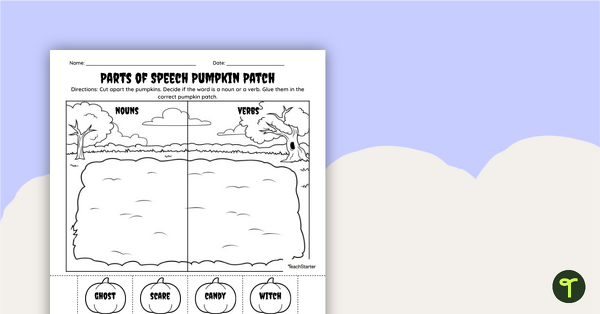
Parts of Speech Worksheet - Halloween Nouns and Verbs
Identify nouns and verbs and put them in the correct pumpkin patch with this cut and paste Halloween Parts of Speech worksheet.
- Plus Plan
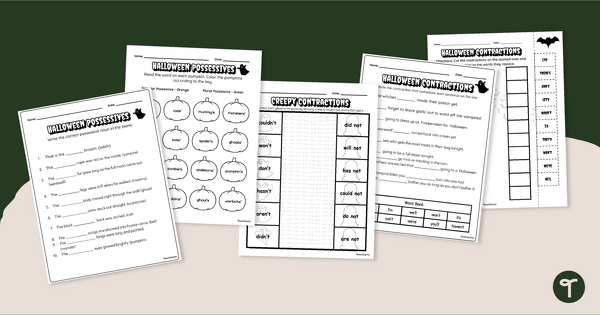
Halloween Grammar Practice Worksheets - Apostrophe Practice
Practice using apostrophes of possession and in contractions with a set of spooktacular Halloween Apostrophe worksheets.
- Plus Plan
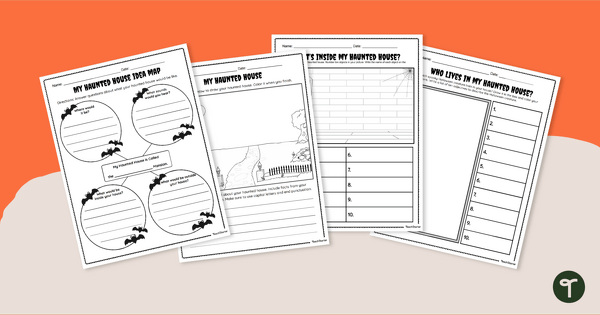
Haunted House Worksheets - Descriptive Writing Activity
Draw and write about scary Halloween houses with a printable Halloween descriptive writing activity pack.
- Plus Plan
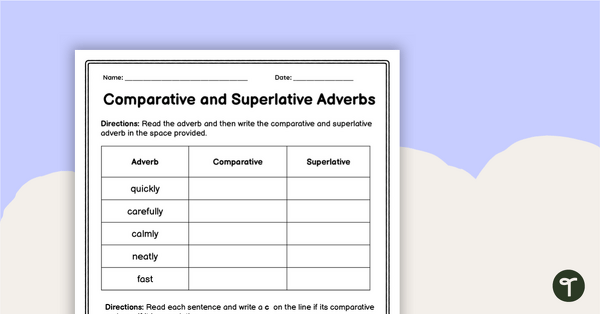
Comparative and Superlative Adverb Worksheet
Use this comparative and superlative adverbs worksheet to check students understanding of this grammar concept in your classroom
- Plus Plan
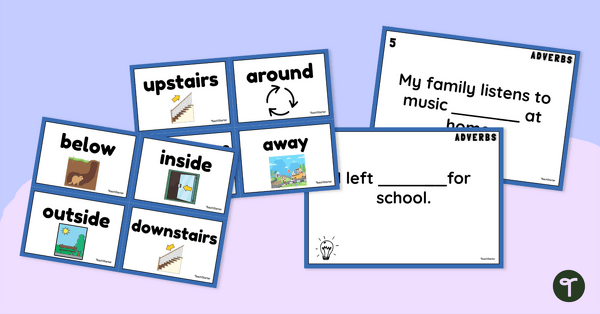
Adverb Whole Class Game
Teach your students how to use adverbs to add detail in simple sentences with this fun whole-class game!
- Plus Plan
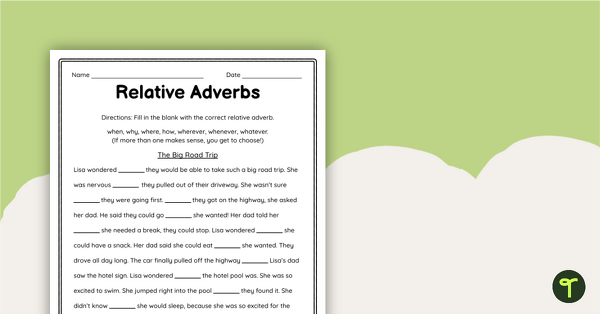
Relative Adverbs Worksheet Pack
Use this pack of five worksheets to help your students practice the correct use of relative adverbs in text.
- Plus Plan
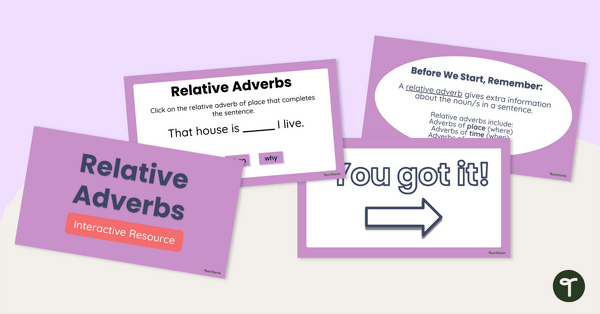
Relative Adverbs Interactive Activity
Use this relative adverbs interactive activity as a warm up for your grammar lesson or to refresh students’ memories before a writing session!
- Plus Plan
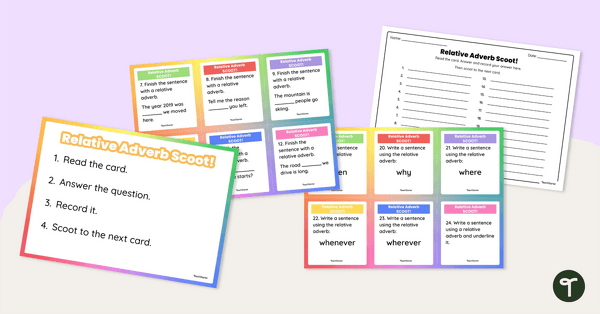
Relative Adverb Scoot Game
Use this relative adverbs scoot game as a warm up or active learning activity to add some color to your grammar lesson!
- Plus Plan
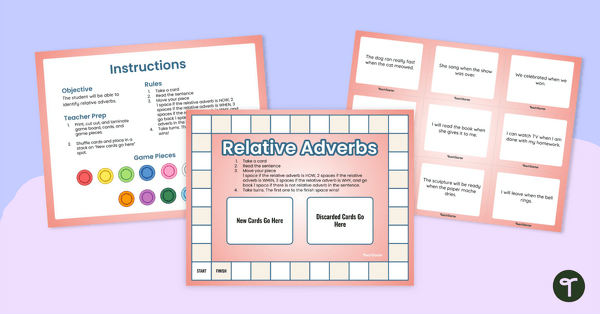
Relative Adverbs Game
Incorporate this relative adverbs board game into your literacy rotations or as a fast finisher activity to reinforce the concept of relative adverbs.
- Plus Plan
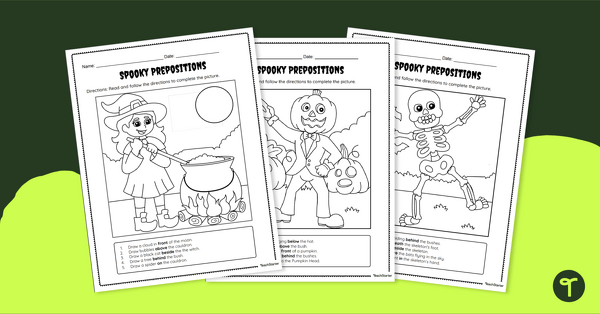
Halloween Finish the Picture - Preposition Exercise
Finish the picture and create a fun Halloween scene with a set of preposition worksheets.